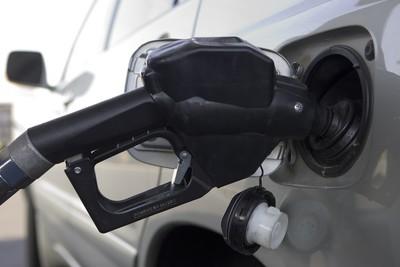Pump Up Your Mileage

With gasoline prices soaring past $3 and no reversal in sight, some Las Vegans find themselves paying as much to fill up their vehicles as they do to register them.
And summer is not going to improve the situation.
“An engine runs more efficiently on cold air, because it’s denser and has more potential energy in it,” said Dave Crowley, automotive instructor for the Community College of Southern Nevada. “So when it’s 115 degrees out, your mileage goes down.”
There are tricks to getting more out of your gallon, however. We asked Crowley, and mechanics around the valley, for their favorite.
SLOW DOWN
Mileage decreases rapidly at speeds exceeding 60 mph. According to fueleconomy.gov, each 5 mph you drive over 60 mph is equivalent to paying 20 cents more per gallon of gas.
Fuel savings: As much as 23 percent, according to fueleconomy.gov.
STAY TUNED
Your car’s main function, besides attracting babes, is converting fuel into motion. A breakdown in any of its systems will decrease its efficiency. Spark plugs and air filters must be replaced, oil changed (using the correct grade), and wheels aligned according to the recommendations in your owner’s manual.
“If you let your vehicle go years without tuning it — which a lot of people do, believe me — you’re getting the worst possible gas mileage,” said Dave Priore, owner of Dave’s Automotive
Fuel savings: As much as 16 percent, according to fueleconomy.gov.
LIGHTEN UP
Going easier on the accelerator pedal and letting off sooner improves mileage. In fact, stop-and-go traffic is why driving is always more fuel-efficient on the highway than in the city.
“If you race right up to the red light and slam on the brake, you’re wasting gas,” Crowley said.
Fuel savings: 5 percent city, 33 percent highway, according to fueleconomy.gov.
LOSE YOUR COOL
Air-conditioning uses more gasoline than you think. And there’s even worse news for aspiring Al Gores: so does opening your windows, because it creates wind resistance. The experts suggest using your vent to cool your 200-degree interior in July.
OK, so skip this one. (We will, too.)
Fuel savings: 20 percent versus air conditioning, 10 percent versus opening the windows at highway speeds, according to autobytel.com.
RACK ‘EM DOWN
Wind resistance also is generated by roof racks.
“If you’ve got something strapped to the top of the car that you don’t use, take it off,” Crowley said.
Fuel savings: As much as 5 percent at highway speeds, according to fueleconomy.gov.
INFLATION: THE GOOD KIND
Less air in your tires equals more gas in your tank. “Every tire has to be inflated to the maximum psi (pounds per square inch) stamped on the side,” Crowley said.
Fuel savings: As much as 3 percent, according to fueleconomy.gov.
UNJUNK YOUR TRUNK
The more weight you move, the more gasoline you need. Period.
“So no 500 pound girlfriends,” said Buffalo Jim Barrier, owner of Allstate Auto and Marine Electric.
Fuel savings: As much as 2 percent for every 100 pounds, according to the Automobile Association of America.
LESS IDLE WORSHIP
Idling gets 0 miles per gallon. So stop your engine if you think you’re going nowhere for more than 30 seconds.
Fuel savings: Variable.
Some mechanics also recommend mileage-boosting gadgets. A favorite is an upgrade to the car’s computer chip, which is programmed for average driving. The chip adjusts the fuel-to-air ratio, among other things. One mechanic estimated a 30 percent to 40 percent mileage boost from the upgrade.
No way, Crowley said.
“After-market chips reprogram the computer for increased performance, but it’s almost never going to result in increased mpg,” he said.
“Manufacturers spend untold millions to try and get maximum miles per gallon. If they could get an extra mile per gallon or two that could be gotten by a little software tweak, don’t you think they’d already do it?”
Another mechanic recommended an octane booster, which costs about $3 to $10 per treatment.
“That’s snake oil, as far as I’m concerned,” Crowley said. “Spend the money on another gallon or two of gas and you’ll go farther.”